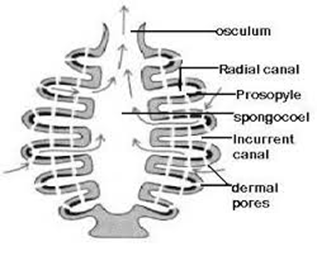Western Blotting - Principle , Method & Diagram
Western Blotting
Western blotting is a type of blotting which is used for identifying particular protein from a sample by using an antibody specific to that protein. This technique was developed by Towbin and his co-worker in 1979. This technique is also known by another name Immunoblot. In this method nitrocellulose and nylon, the membrane is used for blotting. Sometime Polyvinylidene fluoride is also used for blotting purposes. The probe used is an antibody to detect a specific protein. The positive signal indicates that the protein of interest is present in the given sample. The antibody is labeled with radioactive material so that it produces light after combining it with the enzymes.
Detection - Western blotting can be detected in two ways -
Direct Detection - Primary antibody which is made up of purifying the desired protein and then injecting the protein into an animal is used for detecting an antigen on the blot. The primary antibody is labeled with an enzyme or fluorescent dye.
Indirect Method - Here primary antibody is added to the antigen which is followed by a labeled secondary antibody direct against the primary antibody. This antibody is made by injecting the primary antibody into a different animal species.
Related Link - Southern blot technique
The procedure of western blotting - Western blotting is consisting of the following procedure -
- Gel Electrophoresis - The sample protein is separate out according to size on a gel using SDS- PAGE.
- Transfer to membrane - Transfer of protein from polyacrylamide gel to nitrocellulose is done by applying an electric field for 2 hours. After some time the protein is bound to a nitrocellulose filter.
- Blocking - To prevent nonspecific protein interaction, the membrane is blocked. Blocking is done by placing the membrane in the solution of BSA ( Bovine Serum Albumin).
- Adding Antibody - The primary antibody solution is added to the membrane then washed to remove unbound antibody after which the secondary antibody is added which adhere to the primary antibody. The membrane again washes to remove unbound antibody. The secondary antibody linked to the enzyme for which substrate is added which produces color helps in the detection of the protein of interest.
- Detection - The radioactive specific antibody is added on such a membrane. The antibody is labeled with the radioactive isotope.
Application Of Western Blotting -
- This technique is used to determine whether a gene is expressed or not.
- Protein-Protein interaction can also be studied with the help of this technique.
- It is also used for diagnosing several medical tests like viral, genetic, and parasitic diseases.
- HIV detection can be possible by this technique.
- It is useful in an autoimmune disorder.




Comments
Post a Comment